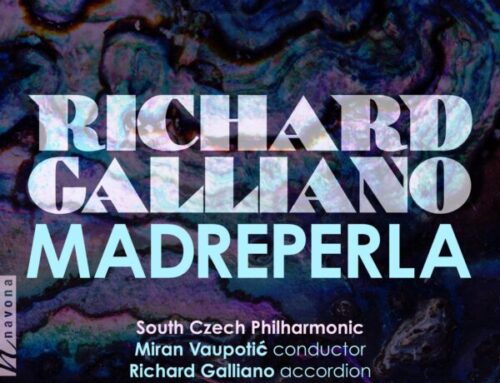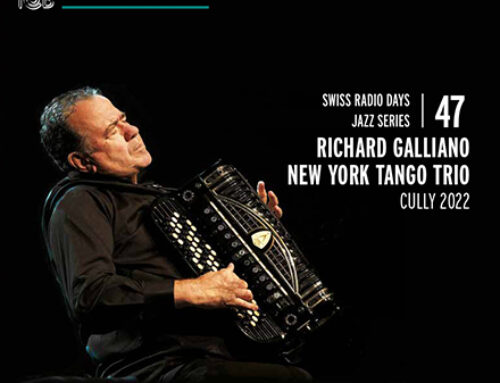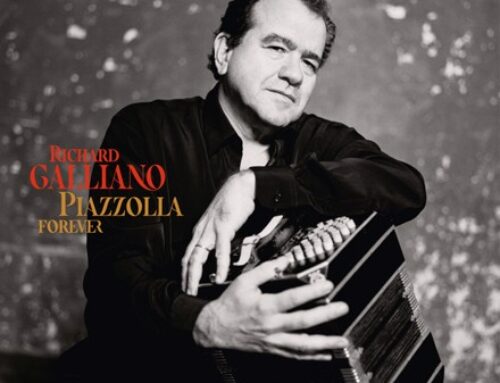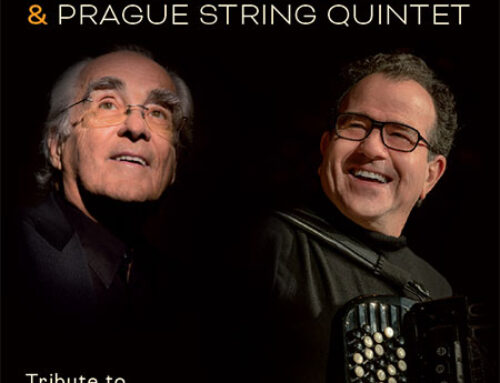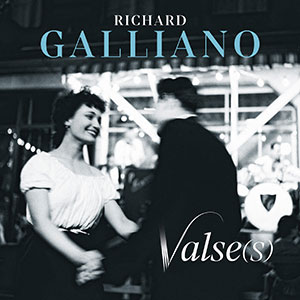
Valse(s)
Richard Galliano
Journey to Nostalgia
More than slow for Debussy, Noble and Sentimentale for Ravel, Triste for Sibelius, Brillante for Chopin, the Valse has stood the test of time and deserted the veneer of salons and hushed atmospheres to slump into popular balls, enthroning the accordion as master of ceremonies of a music that has become Musette, sensual, airy, mischievous, synonymous with celebration, joie de vivre or melancholy when memory fades.
A few forgotten scores at the bottom of a drawer in his father's house, it was enough to exalt the imagination of Richard Galliano and revive the memories of a childhood rocked by waltzes.
Uninhibited accordionist who has rubbed shoulders with all styles, all influences, and who passes cheerfully from a fugue by J.S. Bach to a tango by Astor Piazzolla, from a chorus by Chet Baker to a ballad by Michel Legrand, Richard Galliano has developed this new opus as a refined menu, to delight musical gourmets, open to novelty or nostalgic for an era, whose charm of yesteryear they rediscover here.
Invoking the celestial spirits of his elders and of all those, composers or singers who have nourished his inspiration as accompanist, performer, arranger or composer, Richard Galliano summons his only instrument, to magnify, in this line of musical sketch that he particularly likes, the quintessence of a melody.
It is no coincidence that Barbara profiles her long silhouette to open the ball of nostalgia as "My most beautiful love story" is identified with that experienced by Richard Galliano throughout his fifty years of music and of songs.
The evocation of the Lady in Black is followed by the warm romance of the “Forains”, dear to Henri Sauguet, straight out of an old limonaire which sits there, near the Grand Carrousel.
He hums his ritornello under the lanterns of an eternal party where André Astier, the lifelong friend, in turn plays his "Souvenir d'Accordéon", reminiscent of beautiful Sundays, when we took the time to stroll to the sound of a magic radio that lit up the grayest sky.
And what does the grayness matter since there was, on the outskirts of the big city, "Il piccolo circo", to amaze the children and grant the family a truce of small pleasures, before taking life by the hand and to abolish passing time, to the sound of Shostakovich's Waltz, all in impulses and whirlwinds, to the point of gentle vertigo.
It's time to rest under the tall trees of an imaginary park, a stone's throw from the bandstand where the accordionist dialogues with Chopin, whose moving Valse, so little made for dancing, inclines you to reverie.
The couples nonchalantly follow the pace of the walks when, at the bend of an alley, cheerfulness and carelessness arise, in the guise of "Marion", composed in great secrecy by Richard's father, Lucien Galliano, undoubtedly inspired by her granddaughter and which celebrates, through this musical gem, the eternal youth of the beloved.
And then comes the Paris of Érik Satie, whose indolent soul haunts the streets of Montmartre to the slow rhythm of an evanescent Gymnopédie, which in turn gives way to "Amour et Printemps" by Émile Waldteufel, like a romantic farewell to the City of Light before it swings into the new century, that of jazz and java, of swing and ballroom dance, that of Doisneau's photos and Claude Jean-Philippe's film club.
But, before indulging in the pleasure of dancing, the musician confides his sadness to the stars through a moving message "To Mario", the Italian friend who disappeared a few months ago.
Then the waltz, eager for new sensations, regains control and becomes, in the arms of Louis Ferrari, "La Rabouine", an ardent gypsy whose slender gestures are outlined in Chinese shadow in the half-light of a cellar in Saint Germain-des -Pres and merge with the swirls of cigarette smoke.
And because love stories have no age, it is with emotion on edge, that Richard Galliano once again confesses tenderness to his granddaughter, "Lili", a jewel of innocence. set with sweetness.
The youth has fled but the voice of Claude Nougaro still chants "O que sera", in the Allée des Brouillards, and if by chance it shakes "the Waves of the Soul" with a wind of nostalgia and disturbs the gaze of ephemeral sorrow, the heart continues to dance, until the last chord, until the last tribute, until the "Valse de l'Adieu".
Life that waltzes, twirls, and flies away….
Francine Couturier


